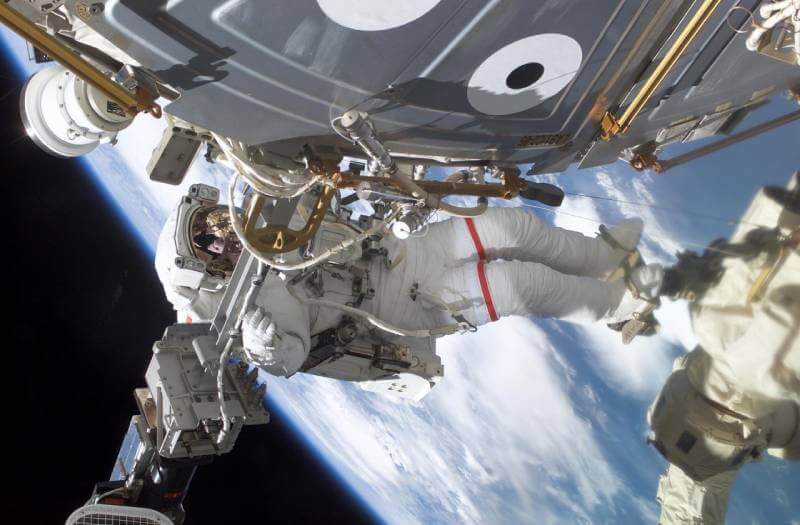Going into space is a challenging feat. Before the astronauts leave Earth, thousands of hours go into building the spacecraft and vehicles used to navigate the cosmos. Building these contraptions is only one part of the puzzle – they must be maintained during their time in space.
What tools do astronauts use to work in space on vehicles like the International Space Station? Known as “Extravehicular Activities” (EVAs), maintenance duties on the ISS and other space vehicles vary in complexity.
Simple EVAs require few mobility techniques, training, or tools to complete the job. Intermediate EVAs need more training, specialized equipment, and tools to complete the task. Complex EVAs require advanced technology and a high level of training to complete successfully.
To train for EVAs, astronauts practice in a pool on Earth. After enduring 25 to 30 hours of training simulations in pools, many astronauts claim spacewalks, and floating in space feels like scuba diving.
EVAs not only require hours of training, but they also require specialized tools adapted to working in zero gravity.
The Challenges of Working in Space
Space presents a unique work environment unlike anything available on Earth. Space suits limit the astronaut’s mobility when carrying out maintenance tasks during EVAs, and one of the biggest issues is a loss of hand dexterity due to the pressure of the space suit.
So, space tool design requires the enlargement of hand controls, including triggers and handles, to make it easier for astronauts to work with them on EVAs. Extreme temperatures in space require specialized materials and lubricants that aren’t commercially available.
Astronauts use tools featuring a “dry film” lubricant, allowing components to slide properly in space. Most tools suited to the custom space work environment are modified versions of common hardware store tools we’re all used to using.
Tools Astronauts Use In Space
Some tools have a specialized design to assist astronauts with servicing unique interfaces on space vehicles and components, like the ISS and Hubble Telescope. To ensure tools perform as per their design, every aspect of the EVA undergoes advanced planning strategies, development, and testing before implementation.
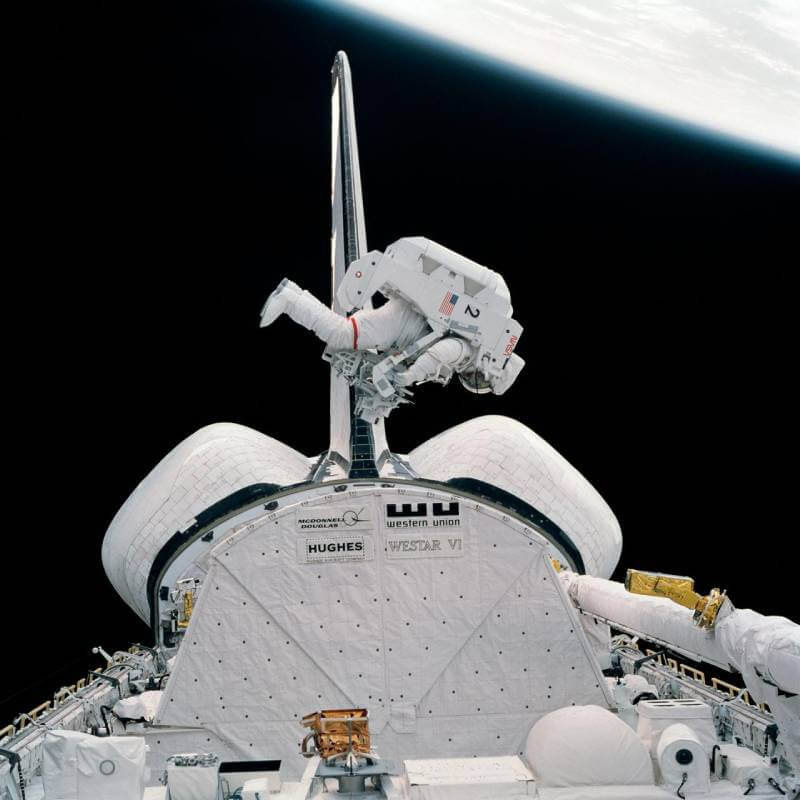
Here are some of the unique tools astronauts use when working in space.
The Manned Maneuvering Unit (MMU)
This propulsion device mounts into a backpack, allowing astronauts to maneuver in space during EVAs without the need for safety tethers. The MMU features 24 nitrogen thrusters operated by controllers extending from the unit.
On February 7, 1984, Bruce McCandless was the first astronaut to use an MMU during Space Shuttle mission STS 41-B. He wandered 300 feet from the shuttle without any tethers to prevent him from floating off into space if something went wrong.
In-Suit Drink Bag (ISD)
Spacewalking can be a thirsty business. The space suit has an “in-suit drink bag” (ISD). The ISD is a plastic bag filled with water, featuring a drinking tube attached by Velcro to the interior of the suit. To take a drink from the ISD, the astronaut turns their head and sips from the mouthpiece.
Pistol-Grip Tool
The piston grip tool is the NASAs version of the cordless drill. It gets its moniker from its handle design, which is similar to a pistol. It’s a staple piece of equipment for EVAs, featuring a control screen on the handle and slots for rechargeable metal hydride batteries.
The screen displays the tool’s speed and torque settings, offering the performance of between 5 to 60 rpm and torque ranging from 1 to 38 square-foot pounds (Newton Meters) of force. Developed in 1993, the pistol-grip tool functions like a regular power drill but turns much slower.
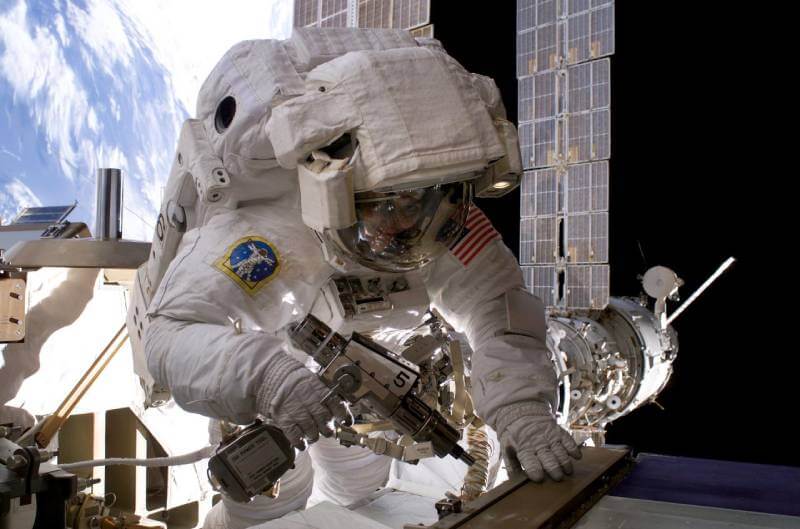
NASA redesigned the pistol-grip tool in 2010 for the mission to replace the HST’s power supply after enduring a critical failure. They needed a unit capable of removing 111 fasteners quickly to remove the damaged panel while being small enough to work in a confined area.
After five years of design, the updated pistol-grip tool offered up to 210-rpms, featuring a “capture plate” to collect the fasteners without letting them float off into space.
Trace Gas Analyzer
Gas or fluid leaks are an issue when making repairs to the ISS. The Trace Gas Analyzer spots these leaks, even if they are too small for the astronaut to notice. For instance, when an EVA connected the ISS to the Destiny laboratory in 2001, the astronauts spotted an ammonia plume emanating from the freshly installed hoses.
NASA’s Jet Propulsion Laboratory partnered with Oceaneering Space Systems of Houston to develop the Trace Gas Analyzer, a smaller version of a mass spectrometer. The TGA is approximately 2″ in length and a component of a larger module weighing around 5 lbs.
The system is about the size of a shoebox and is placed on the astronaut’s chest for easy monitoring. It assists with detecting water, fuel, or oxygen leaks.
Canadarm 2 Robotic Arm
This specialized equipment results from a $ 1.1 billion project initiated by the Canadian government. It’s a jointed crane positioning large pieces of equipment during the construction of the ISS. This Mobile Servicing System, known as the “Canadarm 2,” is a larger model of the long robot arm used in the Space Shuttle, with a reach 8 feet longer than the original instrument.
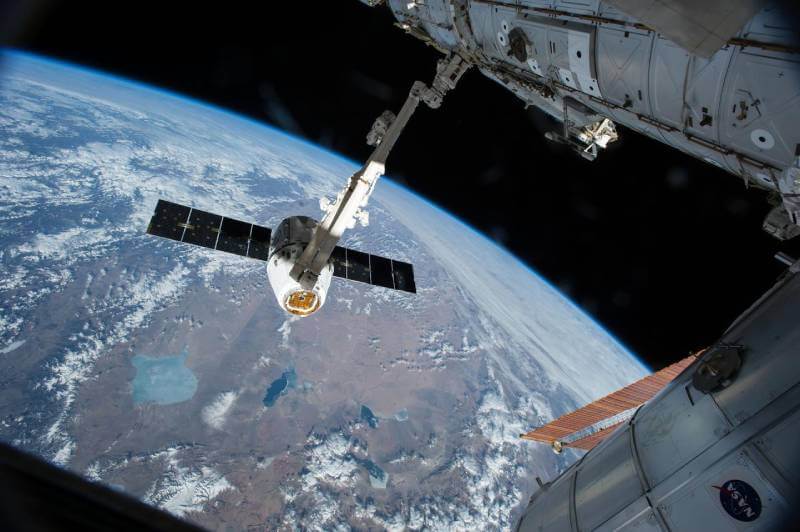
The Canadarm 2 can position equipment weighing up to 200,000 lbs. It also moves astronauts, picking them up in the airlock and transporting them to EVA sites. Built into the truss of the ISS, the arm moves along a specialized track, with astronauts using CCTV to guide Canadarm 2 into position during EVAs.
The Canadarm 2 is different from the Space Shuttle arm, using force sensors to create an artificial sense of touch in operation. It also features an anti-collision system to prevent accidents.
Safety Tethers
While less exciting than the equipment mentioned above, safety tethers are crucial for any EVA. When working on the Space Shuttle, ISS, or Hubble Space Telescope, astronauts attach themselves to the equipment using a 25-foot tether featuring construction with heat-resistant webbing.
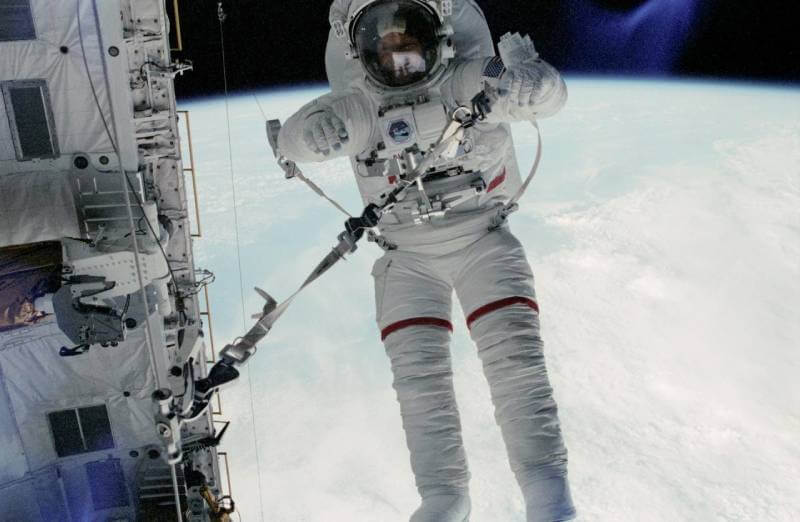
The safety tether attaches to handrails mounted to the ISS truss, with a cable that reels out to a desired length. The tether features a safety load rating of 878 lbs., supporting the astronaut’s weight and their toolbox, which NASA calls an “Extravehicular Mobility Unit.”
Without tethers, their equipment would drift off into space, where its risks colliding with the ISS or Space Shuttle. Astronauts could also float off into space without using tethers. Astronauts also use self-closing bags for stowing bolts.
Conclusion
While the tools available at the hardware store are useful on Earth, they don’t have much use in space. Astronauts require specialized tooling and hours of intense training to gain the skills to work in a zero-gravity environment.
NASA spends millions of dollars on tooling development and even more on training the astronauts that use them. Some tools, like the Canadarm 2, are massive projects requiring collaborations between nations. Some are as simple as straps to stop astronauts from drifting away into space.
Next time you stare into the sky with your telescope and watch the ISS drift by overhead, imagine an astronaut could be tethered to a safety bar, cranking away on equipment with a pistol-grip tool.

